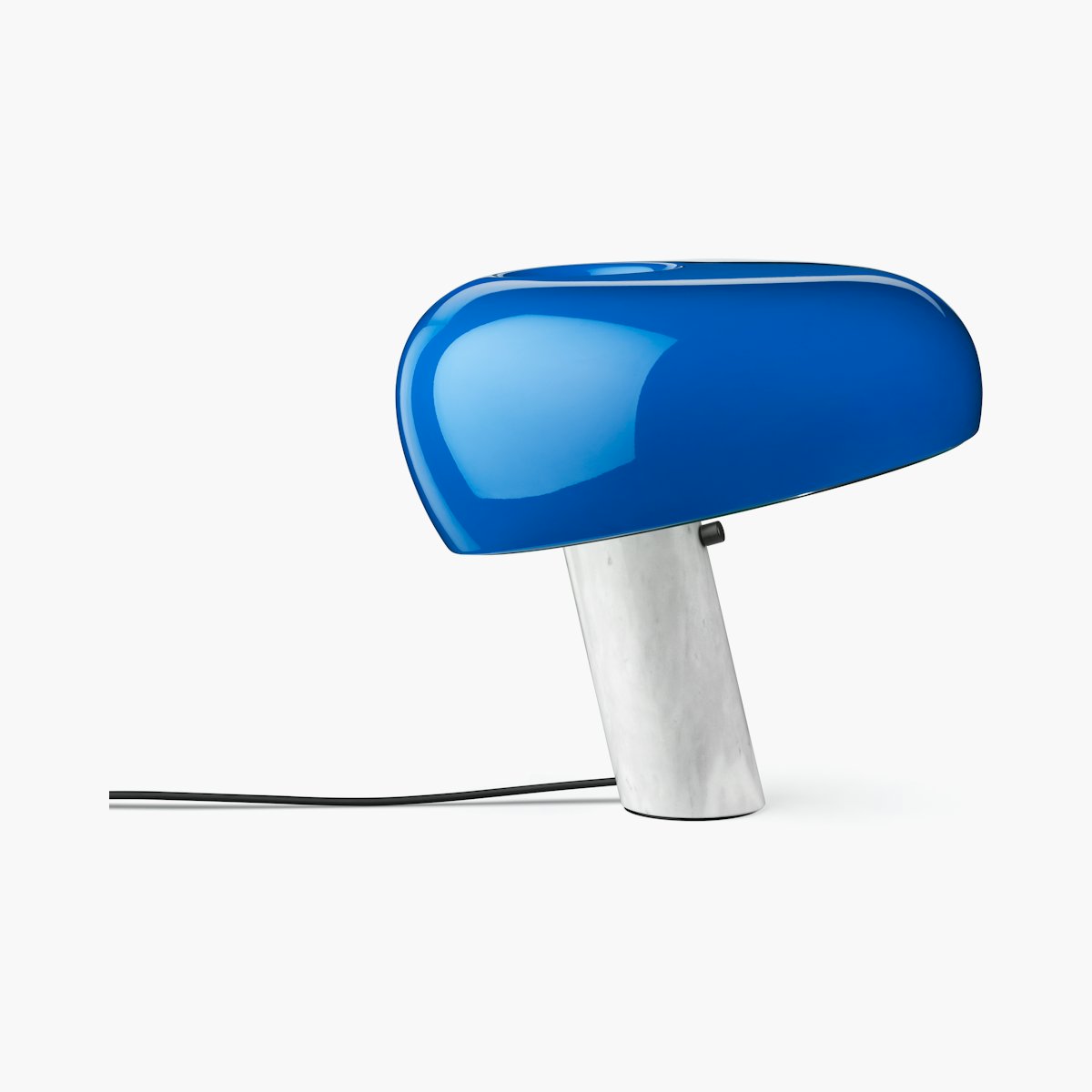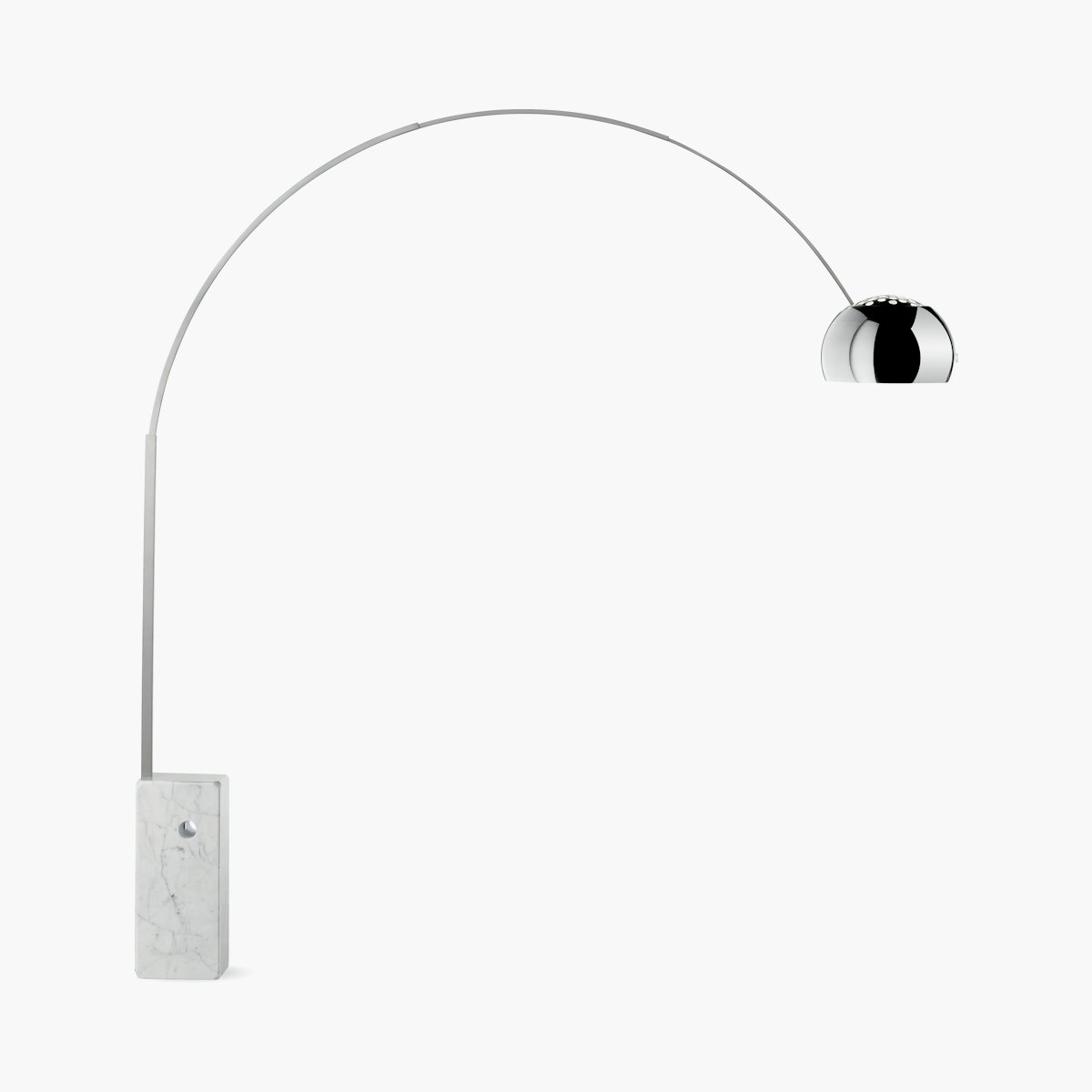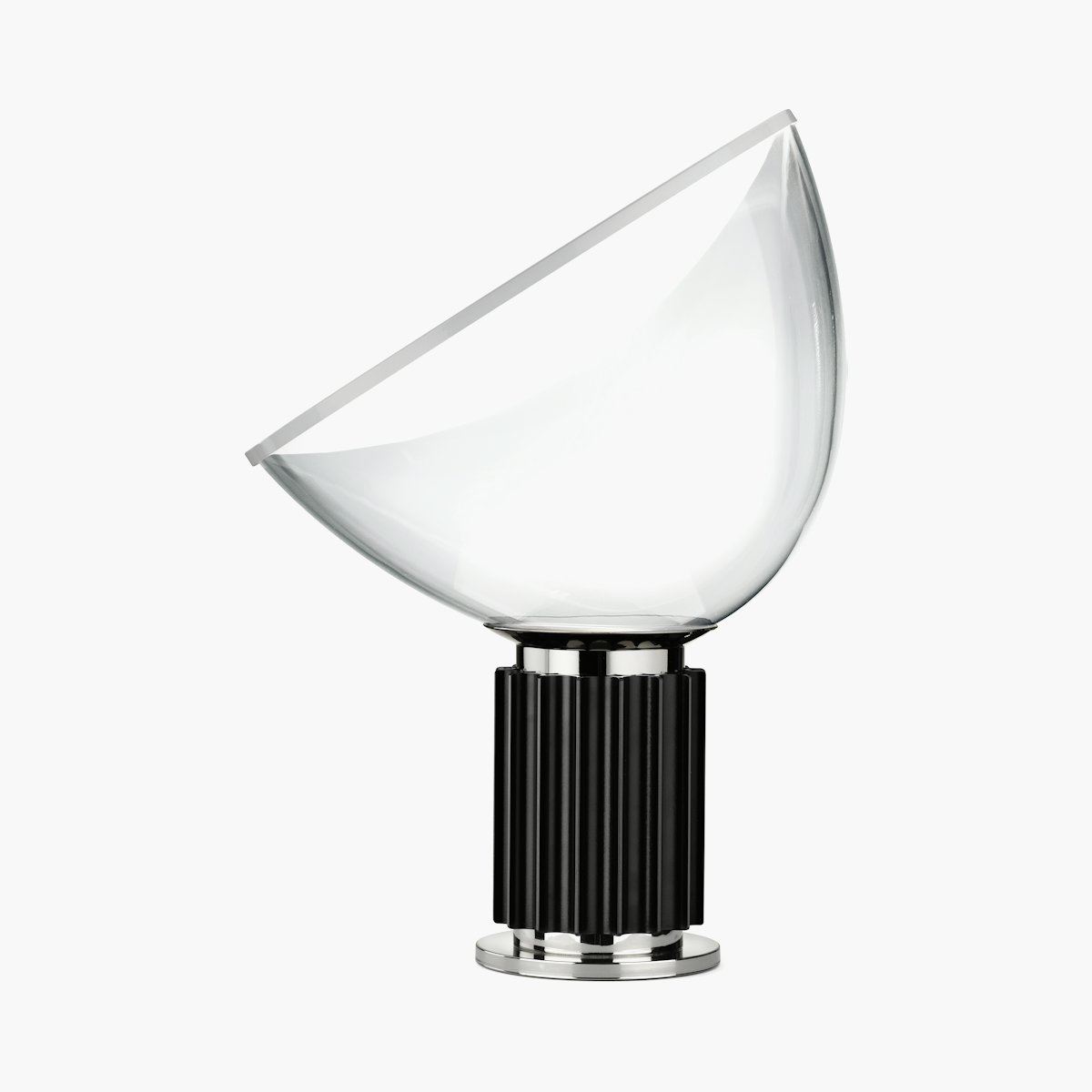Achille Castiglioni’s designs were often inspired by everyday things and made use of ordinary materials like extruded aluminum and stainless steel. The genius of his inventive imagination was in his ability to use the minimal amount of materials while creating forms with a maximum effect. “Start from scratch, stick to common sense, and know your goals and means,” he often told his students, and he clearly took his own advice.
Along with other postwar designers like Marco Zanuso and Ettore Sottsass, Castiglioni was a product of the artisan tradition of fine craftsmanship and a familial passion for sensual, expressive forms. With his brothers, designers Livio and Pier Giacomo, Achille helped establish the Milan Trienniale, the Compasso d’Oro awards and the ADI. And, like his contemporaries, Castiglioni took an active part in Italy’s postwar design renaissance. Lack of funds for large architectural projects forced designers to focus on small objects like furniture, tableware, lighting, radios, typewriters and office equipment.
Castiglioni himself possessed a creative potency and flexibility that gave birth to an array of stylistically varied objects including the minimalist Parentesi Lamp, the “ready made” Taccia and the poetic Fucsia Hanging Lamp. One of his favorite design strategies was to place a familiar form in an unexpected context – a tractor seat atop a stool, an automobile headlight reflector as a table lamp.
His highly individual work still displays an ironic humor, lively sense of paradox, and thoughtful concern for formal balance. During his long career, he was a professor of interior and industrial design at both the Politecnico di Torino and Politecnico di Milano, and was honored with eight Compasso d’Oro awards. Achille Castiglioni continues to be recognized as one of the most important and complex figures in 20th-century Italian design.
Along with other postwar designers like Marco Zanuso and Ettore Sottsass, Castiglioni was a product of the artisan tradition of fine craftsmanship and a familial passion for sensual, expressive forms. With his brothers, designers Livio and Pier Giacomo, Achille helped establish the Milan Trienniale, the Compasso d’Oro awards and the ADI. And, like his contemporaries, Castiglioni took an active part in Italy’s postwar design renaissance. Lack of funds for large architectural projects forced designers to focus on small objects like furniture, tableware, lighting, radios, typewriters and office equipment.
Castiglioni himself possessed a creative potency and flexibility that gave birth to an array of stylistically varied objects including the minimalist Parentesi Lamp, the “ready made” Taccia and the poetic Fucsia Hanging Lamp. One of his favorite design strategies was to place a familiar form in an unexpected context – a tractor seat atop a stool, an automobile headlight reflector as a table lamp.
His highly individual work still displays an ironic humor, lively sense of paradox, and thoughtful concern for formal balance. During his long career, he was a professor of interior and industrial design at both the Politecnico di Torino and Politecnico di Milano, and was honored with eight Compasso d’Oro awards. Achille Castiglioni continues to be recognized as one of the most important and complex figures in 20th-century Italian design.
4
Results
4
Results
View






